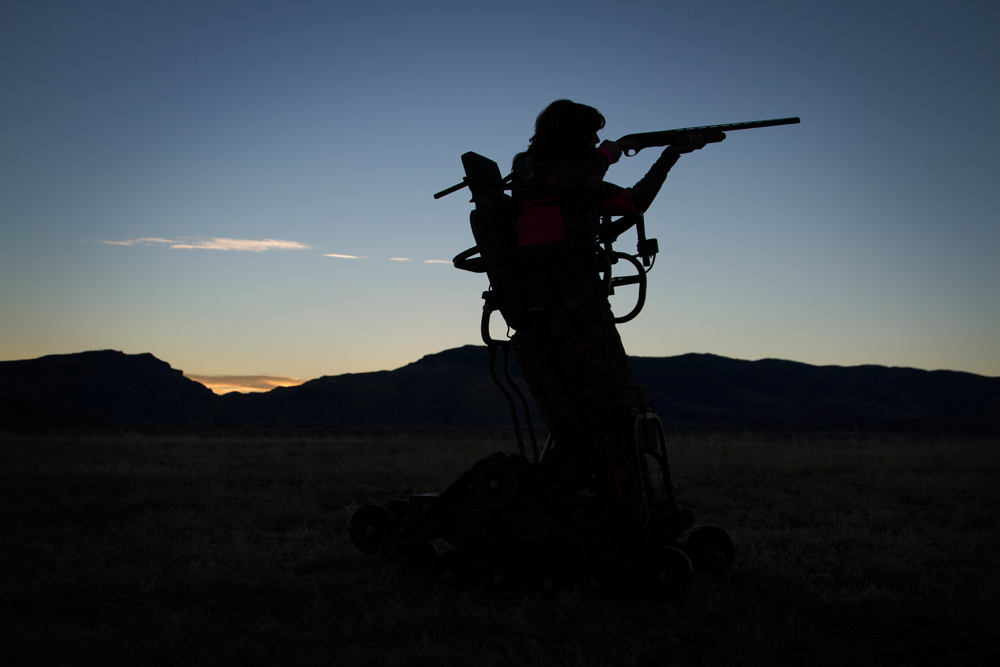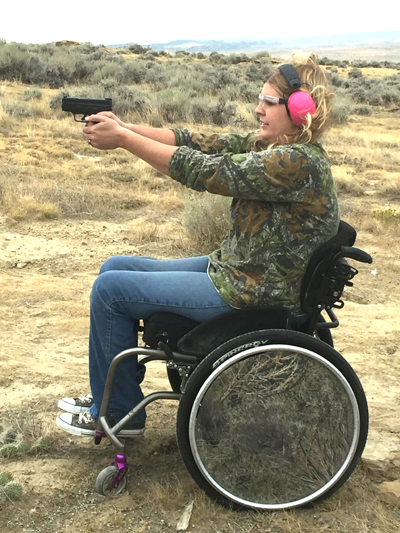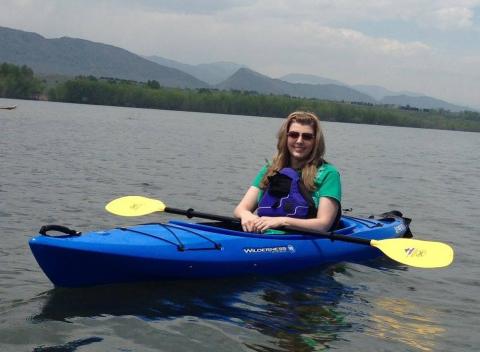provided by John Phillips
I first met Mossy Oak Pro Ashlee Lundvall of Cody, Wyoming, 5 years ago. “I’d like to become an outdoor writer and work in the outdoors,” Lundvall told me then. Her dream certainly has come true. In that short time, she’s won the Pathfinder Award presented by Safari Club International (SCI) and a hunting trip for her family and herself to Africa. Lundvall also has been appointed to the President’s Council for Sports, Fitness and Nutrition along with well-known outstanding athletes, movie stars and coaches. She’s been asked to become a brand advisor for a silencer/suppressor company and serves on two National Rifle Association (NRA) committees – the Outreach Committee and the Disabled Shooting Sports Committee. She writes for “Women in the Outdoors,” “Able Outdoors” and several other publications. She’s now training for archery competitions to qualify for the Paralympic Games either in 2022 or 2024.

More outdoor organizations are becoming aware of not only people with disabilities but also are creating outdoor programs that allow for inclusion of people with disabilities and people from minority groups. Today more than 2.2 million Americans depend on wheelchairs. The Outreach Committee of the National Rifle Association (NRA) has reached out to minority groups to make sure that everyone has an opportunity to be represented by the NRA and to make its programs accessible for minority groups through information, education and resources. The NRA Adaptive Shooting Sports Committee specifically works for people with disabilities to find adaptive hunting opportunities, competitions and equipment to allow them to shoot and to hunt.
For people with physical disabilities who want to participate in the shooting sports, Dr. Joe Logar of the NRA runs an adaptive shooting-sports program. He works with the Waiver Program that allows people with disabilities to shoot competitively in matches and works to make sure that these shooters have the right accommodations they need to shoot. This program enables people with disabilities who may have shot competitively before becoming disabled to return to competitive shooting. It also works with people with disabilities who want to learn to competitively shoot know what equipment they need and how to get started.
 The President’s Council for Sports, Fitness and Nutrition is made up of several dozen of us who represent various types of Americans who understand the importance of staying active and eating healthy for their health and well-being. On this committee, I represent women and the disabled community. This committee is made up of athletes, Olympians, coaches, fitness instructors and doctors. We provide pamphlets and information to enable people to live better lives in the outdoors through sports, exercise and nutrition. We’re especially focused on U.S. children and want to encourage them to get involved in sports and stay active and eat healthy.
The President’s Council for Sports, Fitness and Nutrition is made up of several dozen of us who represent various types of Americans who understand the importance of staying active and eating healthy for their health and well-being. On this committee, I represent women and the disabled community. This committee is made up of athletes, Olympians, coaches, fitness instructors and doctors. We provide pamphlets and information to enable people to live better lives in the outdoors through sports, exercise and nutrition. We’re especially focused on U.S. children and want to encourage them to get involved in sports and stay active and eat healthy.
I had my accident when I was 16 years old in 1999, more than 21 years ago. At that time, I played volleyball, basketball, slow-pitch softball and fast-pitch softball. I was a four-sport athlete all year long. I always loved the outdoors but wasn’t as involved in outdoor sports until after I had my accident. But after my accident, I decided I wanted the outdoors to be my new sports arena. I wanted to find more activities I could do on my own in the outdoors.
In disabled team sports, you must have numbers of people who have disabilities similar to yours to compete. At that time, I didn’t know many people with disabilities. Also, I fell in love with a guy who not only loved the outdoors but hunted, fished, hiked and did everything there was to do in the outdoors. Getting into the outdoors wasn’t too difficult for me because no one ever told me after my accident that I couldn’t participate in outdoor sports. So, I just went out and started trying different outdoor activities.
When I first began hunting, I used a crossbow, and I loved it. But I wanted to challenge myself more, and two years ago I got my first compound bow. I had a number of companies like Bowtech that sent me a bow and other equipment I needed to hunt with a compound bow. Last year the Challenged Athletes Foundation helped me get a competition bow from Hoyt. So today I’m working to get competitive enough to go to matches and compete with my big goal becoming a Paralympian one day and competing in the Paralympic Games.
Right now, I’m living a bigger life than I ever would have dreamed. I never would have believed I’d be as active as I am now or be able to do as much as I’ve done. I think that when you lose something as precious as your mobility, and you start to get it back, you not only need to be appreciative and thankful but to try and live life to the fullest. Any time I’m given an opportunity to try something new, I take it. I like to be the demo person for new equipment, new forms of travel and new activities, so that I can help others find the joy I’ve discovered in all I do. Every good thing in my life now is a direct result of my accident and the functions I lost 21 years ago.
In her book, “A Redefined Life,” Ashley tells how she was injured at age 16 and not only recovered but today lives a life she’d only dreamed of having. Ashlee’s book is also available from Amazon.



























